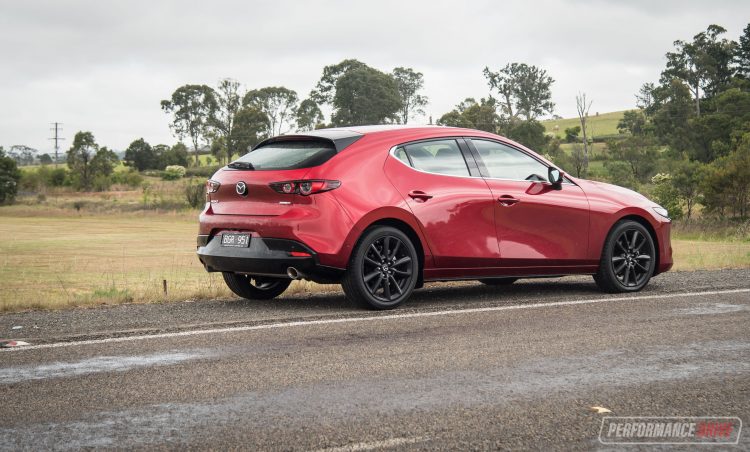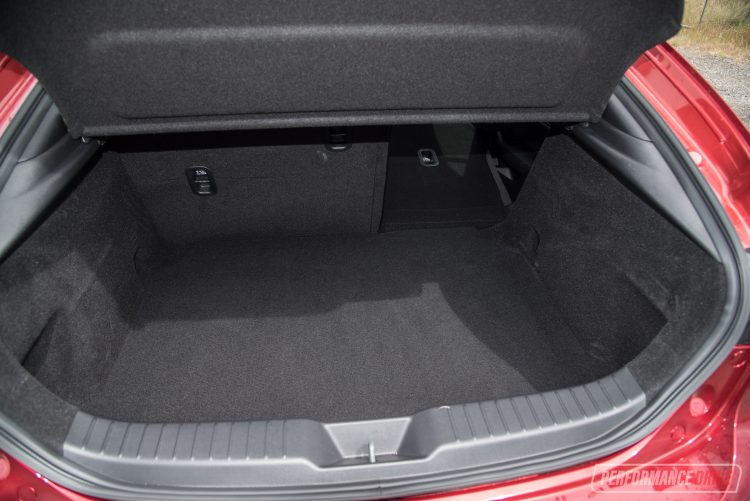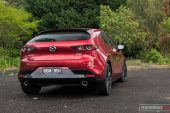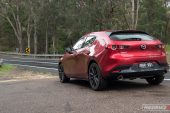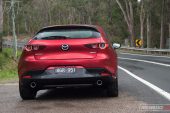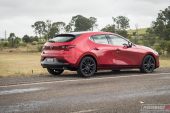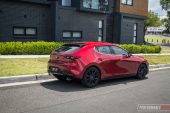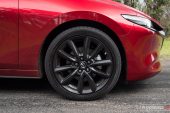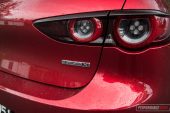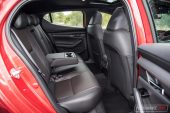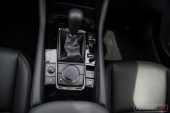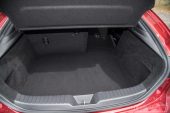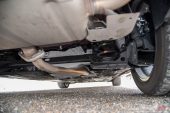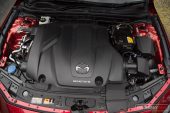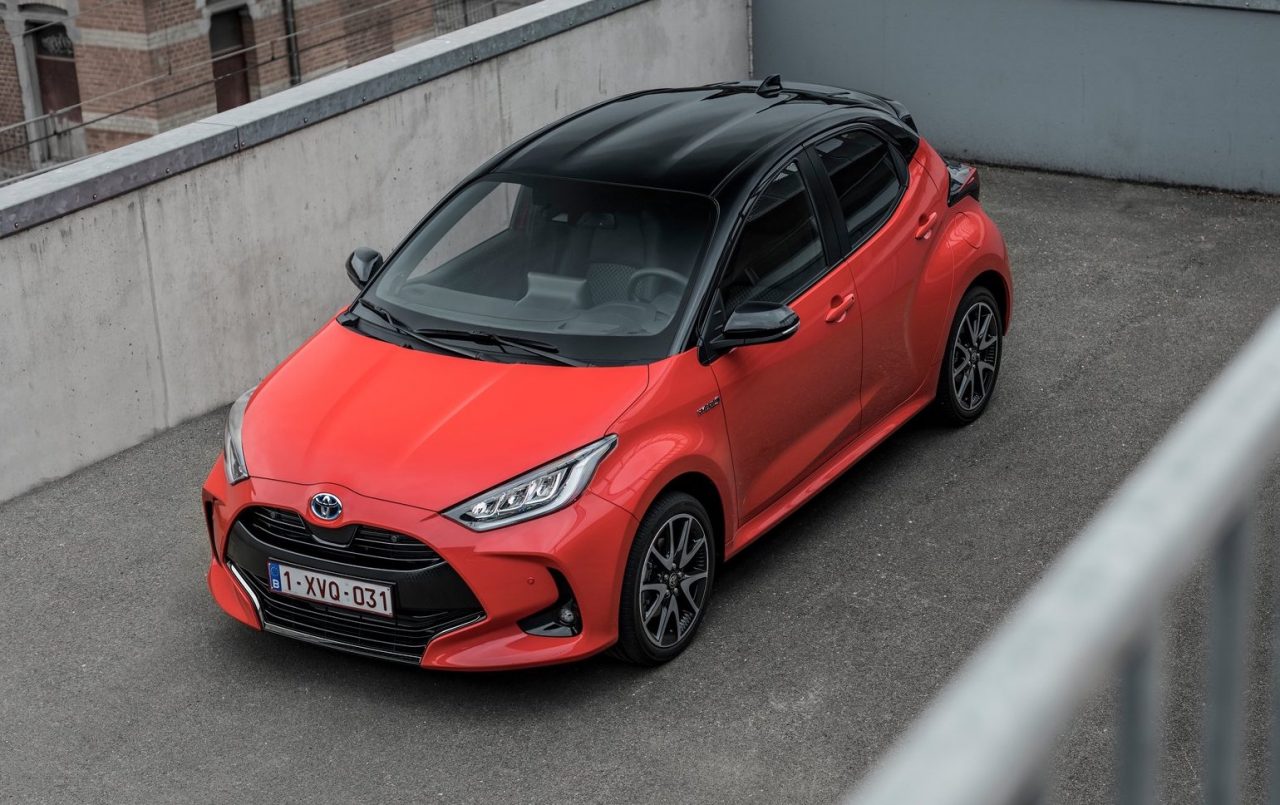The Mazda3 has been a huge success for the Japanese manufacturer. But since the recent price hike with the introduction of the current generation, and as more and more consumers clamber into the SUV arena, Mazda3 sales have started to dwindle in Australia.
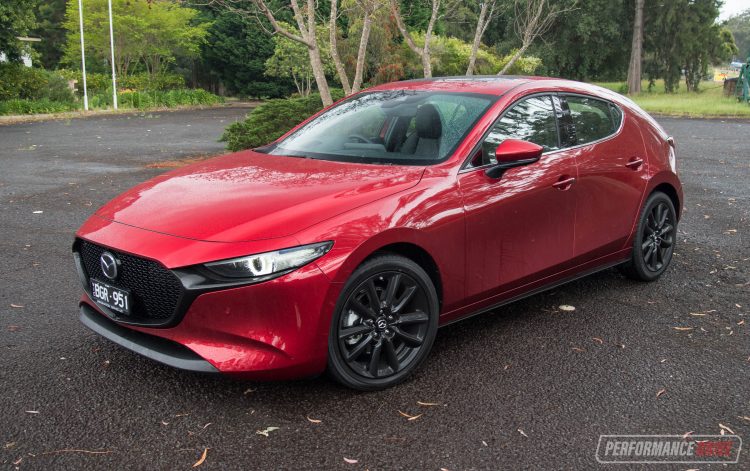
According to October 2020 VFACTS figures, year-to-date sales for the nameplate are down 46 per cent compared to the same period in 2019. Yes, we have had a global-scale pandemic this year, but the other big three small cars (Toyota Corolla, Hyundai i30, and Kia Cerato) have only experienced sales declines between 19 and 30 per cent.
Not even midway through its fourth-generation lifecycle, Mazda needed to improve the 3’s fuel consumption and emissions to bring it nearer to the segment benchmarks. But the company has decided not to follow trends and offer petrol/electric hybrid or turbocharged options. Instead, it has developed a mild hybrid petrol engine, and a world-first combustion technology (for a production car). It’s called Skyactiv-X M Hybrid.
Mazda offers the new engine in top-spec Astina form only in Australia, in hatch or sedan. This means you do need to pay a premium to experience the new tech. Prices begin at $40,590 for the manual hatch, plus $1000 for the auto (plus on-road costs). That’s around $3000 more than the regular G25 Astina hatch, and $7000 more than the Toyota Corolla ZR which features a full hybrid powertrain.
2020 Mazda3 Astina Skyactiv-X – THE SPECS
[column width=”47%” padding=”6%”]Engine: 2.0-litre supercharged four-cylinder
Output: 132kW@6000rpm / 224Nm@3000rpm
Transmission: Six-speed auto
Drive type: Front-wheel drive
Wheels: F: 18×7.0, 215/45
ANCAP: Five stars
Tare weight: 1400kg
Power-to-weight: 10.60:1 (kg:kW)
Official fuel economy: 5.5L/100km
Economy during test: 7.1L/100km
Fuel capacity/Type: 51L/95 RON[/column] [column width=”47%” padding=”0″]Power efficiency: 24kW:L/100km
0-60km/h: 4.70 seconds*
0-100km/h: 9.79 seconds*
60-110km/h: 6.80 seconds*
1/4 mile: 17.05 seconds at 136.7km/h*
Max acceleration: 0.802g
100-0km/h braking: 3.06 seconds at 39.82 metres*
Max deceleration: -1.134g
Decibel at idle: 40*
Peak decibel at 60-100km/h: 84*
Priced from: $41,590[/column][end_columns]
* Figures as tested by PerformanceDrive on the day. Factory claims may be different
2020 Mazda3 Astina Skyactiv-X – THE PACKAGE
New engine aside, you get the full kit with the Astina variant. Some highlights are a brilliant 12-speaker Bose sound system with Android Auto, Apple CarPlay and digital radio, active cornering and auto-dipping headlights, 18-inch alloy wheels with tyre pressure sensors, blind-spot sensors with active lane keeping aid, a 360-degree parking camera system, forward and reverse collision mitigation with pedestrian detection, rear cross-traffic alert, head-up info display, and a sunroof, to name a few. We are sure the new engine will eventually flow through to lower spec models, but for now the price is quite high for a small hatch. Even with this stuff.
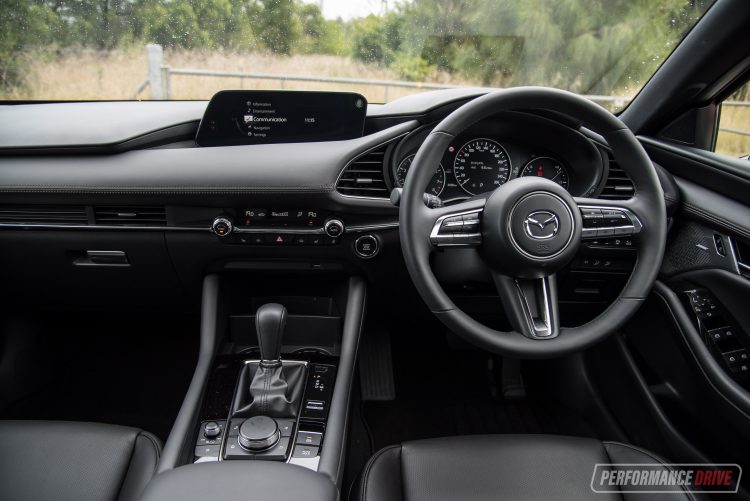
On the outside, the latest Mazda3 looks fresh and very modern. It uses a smooth sheet metal design with minimal creasing and contouring. At the rear, the windows are small, which gives off a high-waisted and sporty stance. But that, along with thick C-pillars, can make sitting in the back feel rather claustrophobic. The LED lighting all around looks brilliant at night, as well as the black alloys.
The Euro-style external design is replicated for the interior. Contours are flowy with lots of glossy or soft-touch surfaces. Our test model had minor scratches and blemishes on the glossy areas, which makes us question how hard-wearing these materials are. The menus on the multimedia screen are quick to get used to, and the control knob on the centre console is very easy to fathom.
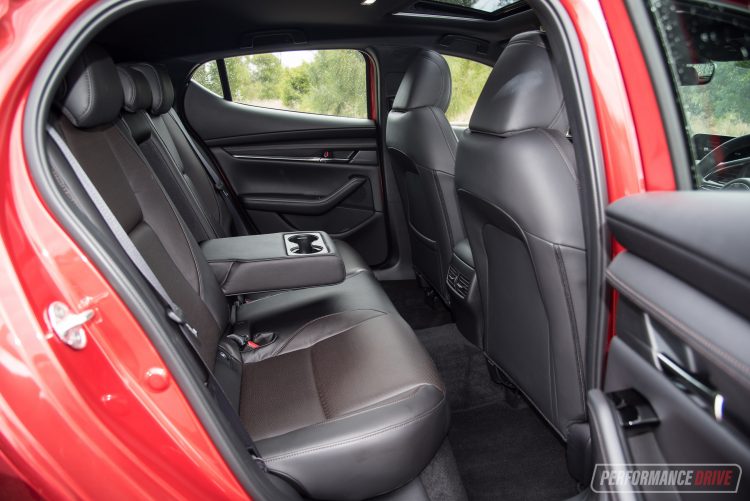
There is an adequate amount of room to accommodate four adults on city trips comfortably. Passengers banished to the rear row will experience an amount of space that is about average with the small car market, and unlike some rivals the Mazda3 features rear climate vents for added comfort.
In the boot, the Mazda3 hatch has one of the smallest boot sizes among the competition, measuring in at just 295 litres. To compare, the Toyota Corolla hatch measures in at 333 litres, the Hyundai i30 offers 395 litres, and the Kia Cerato presents 428 litres. Opting for the sedan increases the space to 444 litres.
All Mazdas come with a generous five-year, unlimited kilometre warranty and five years of roadside assistance for added peace of mind. Only the Kia Cerato tops this, with its seven-year warranty coverage.
2020 Mazda3 Astina Skyactiv-X – THE DRIVE
Mazda wanted to steer away from the template petrol-electric hybrid trends and is daring to be different. It has no doubt spent its research and development budget on creating the Skyactiv-X. And on paper, it does seem like a revolutionary package that certainly could provide some meaningful economy and performance attractions.
It combines the functions of a normal spark-ignition setup we know from all petrol engines, with a diesel-like high compression ratio of 15:1. The compression is so high it’s actually able to run on compression ignition, just like a diesel. Mazda calls it Spark Controlled Compression Ignition (SPCCI). Mazda explains:
“In SPCCI mode, a split injection process creates separate zones of fuel-air mixture inside the combustion chamber. First, a very lean fuel to air mixture is injected into the combustion chamber during the intake stroke, then a zone of atomised fuel is precisely injected directly around the spark plug during the compression stroke. The small injection of atomised fuel directly around the spark plug builds a richer core. When the spark fires, it ignites this core of fuel and air. This increases pressure in the combustion chamber to the point where the lean mixture rapidly combusts.”

The mild hybrid side is made up of a belt-driven starter generator and a 24V lithium-ion battery. It recycles energy recovered during deceleration and functions as an electric motor to assist the petrol side.
All this sounds very advanced and impressive. But what does it do for real-world performance and economy? Well, not a great deal to be honest. In our experience anyway. On paper, it generates 132kW of power and 224Nm of torque. Mazda probably hopes you overlook the 7kW and 28Nm disadvantage over the conventional 2.5L engine, which is cheaper and still available. However, emissions are reduced from 154g/km to 135g/km (combined test cycles) in comparison. Fuel consumption drops from 6.6L/100km to 5.5L/100km on the official average.
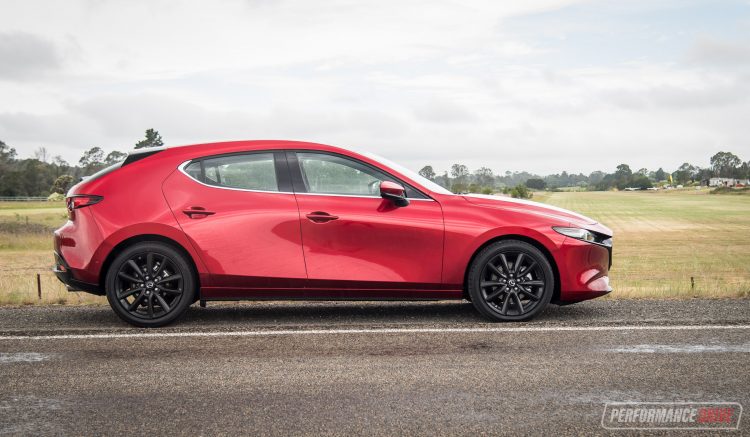
There is also the conventional 2.0L petrol engine that comes even closer (perhaps too close for the extra price) to the emissions and fuel consumption of this new Skyactiv-X engine. We struggled to get anywhere near the claimed 5.5L/100km average during our test. The lowest we experienced was 7.1L/100km over 600km of mixed driving conditions.
With no comparing, the engine itself feels ultra-smooth and quiet in its advanced power delivery. You won’t notice the transition of the SPCCI mode either. It has reasonable get-up from low speeds, and feels comfortable when revved. Using a Vbox we timed 0-100km/h in a pretty lazy 9.79 seconds – we’ve seen some base model 2.0L rivals produce quicker results.
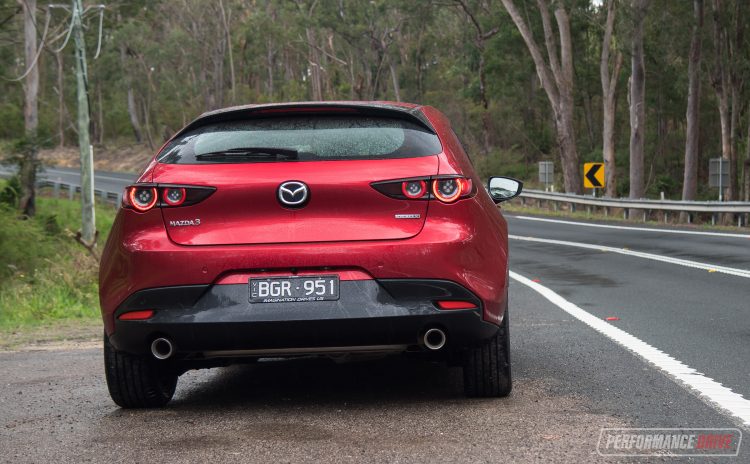
So, comparing to the other engines on offer, the Skyactiv-X doesn’t achieve great things for the price hike. And comparing to the Toyota Corolla’s green alternatives, they comfortably burn under 5.0L/100km in the real world, and they’re available at much lower prices (hybrid is available across the range). There is a minimum requirement of 95 RON fuel in this, which is higher than the 91 requirement for the 2.0L and 2.5L alternatives. So, it will cost you a fraction more at the petrol bowser as well.
Continuing with the old-fashioned torsion beam suspension setup at the rear, it’s not as comprehensive in dynamics as others in the market. But the ride quality is beautiful, over everything from those pesky speed humps to bumpy country roads. Road noise levels have improved compared with previous generation Mazda3s, too. Even when the engine is revved, or when a coarse road is beneath you, the car glides along whisper-quiet.
The handling is sporty and responsive when pushed through a nice series of bends, and the steering system provides loads of feedback so you can regularly get into the groove. There’s also a perfect driving position so you can spend hours behind the wheel without feeling fatigue.
2020 Mazda3 Astina Skyactiv-X – THE VIDEO
2020 Mazda3 Astina Skyactiv-X – THE VERDICT
The new Skyactiv-X engine is a willing and competent engine. But it does not live up to the technical hype of being a ‘green’ alternative. The real-world fuel consumption, power output, performance, and emissions figures are not particularly impressive for this class, and thus don’t seem to justify the premium price.
Yes, the fact this engine is only available in the top-spec Astina model can be blamed for the premium price. But we can’t see many loyal Mazda3 owners flocking to showrooms to renew to what is now a $40k-plus small car. On the other hand, the Skyactiv-X innovation is definitely very interesting, and we expect it will evolve in the near future to help improve performance and economy for more and more Mazda models.
[column width=”47%” padding=”6%”]PROS:
– Stylish interior with brilliantly comfortable seats
– Easy-to-use media interface, and killer Bose sound system
– Advanced safety tech
– Refined and compliant drive experience
[/column] [column width=”47%” padding=”0″]CONS:
– Minimal fuel consumption and emissions benefit over regular 2.5L
– Poor peripheral rearward vision, claustrophobic rear seats
– Slow compared with less powerful 2.0L rivals[/column][end_columns]
As always, if you’re thinking about buying a new car don’t forget to click here to speak with our car buying specialists.
